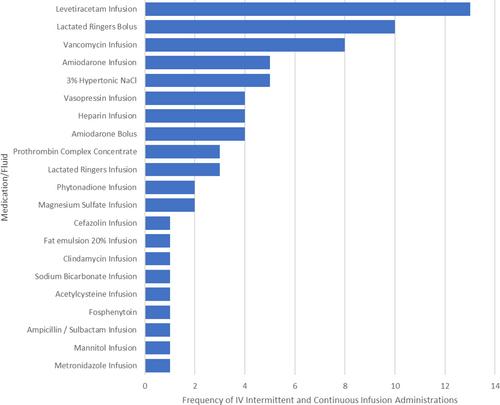Pharmacist administered parenteral medications: A descriptive report of an inpatient training program
Abstract
Introduction
Parenteral medication administration is a crucial aspect of in-hospital patient care and has been historically managed by nurses and physicians. Despite pharmacists' extensive training in the medication use process, their underutilization in medication administration stems from various factors, including the lack of formalized training, limited awareness by other healthcare professionals, and unclear legal guidance. This report discusses the implementation and outcomes of a pharmacist medication administration program at a large academic medical center.
Methods
The initiative began by revising hospital policies, enabling pharmacists to administer medications during emergencies. Documentation and communication protocols were established. Training included an online module and hands-on sessions covering various topics with a focus on parenteral medication administration and medication safety. Following completion of the program, competency of pharmacists was assessed by pharmacists experienced in intravenous administration using simulated patient case scenarios. Following implementation, the frequency and characteristics of pharmacist administered medications were captured and described.
Results
Thirty pharmacists, including 11 residents, participated. Seven pharmacists administered 349 doses of medications to 284 patients in emergency situations. Administrations by pharmacists included 227 titratable infusions, 72 intermittent or continuous infusions, 49 intravenous pushes, and 1 intranasal naloxone. Classes of medications included high risk products such as vasopressors, sedatives, antiarrhythmics, and thrombolytics. No extravasations or infiltrations were reported.
Conclusion
Implementation of the pharmacist medication administration program signifies significant progress in strengthening the pharmacists' role in patient care at the bedside specifically highlighting the competency of pharmacists to administer parenteral products during emergency situations. The absence of adverse events highlights the feasibility and safety of integrating pharmacists into the bedside team. As the landscape of health-system pharmacy evolves, embracing standardized training programs like ours reemphasize pharmacists' essential contributions to the multidisciplinary healthcare teams, ultimately enhancing patient care and safety.


 求助内容:
求助内容: 应助结果提醒方式:
应助结果提醒方式:


